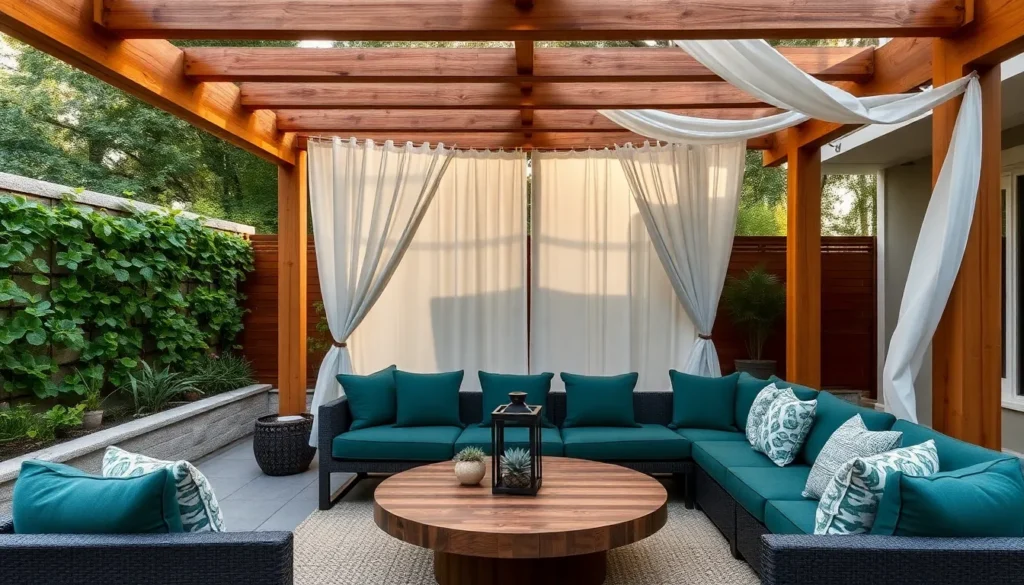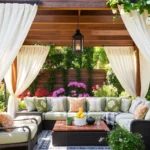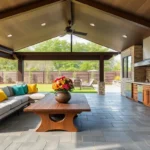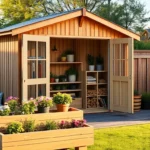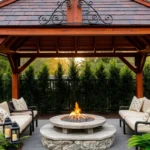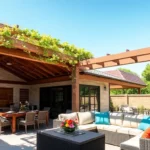Transforming your backyard into a private sanctuary can elevate your outdoor living experience to new heights. Whether you’re a seasoned homeowner with a keen eye for design or just beginning your journey in creating an inviting outdoor space, understanding the art of crafting secluded retreats is essential. In this article, we delve into 13 innovative outdoor shelter designs that provide ultimate privacy, offering both style and solitude.
You’ll discover practical insights into selecting structures that blend seamlessly with your landscape while also meeting your privacy needs. From clever pergola setups to lush green walls, each idea is designed to inspire and empower you to create a personal haven right outside your door. Join us as we explore these dynamic designs that promise to enhance your outdoor living space with both beauty and function.
Choosing Secluded Garden Gazebos
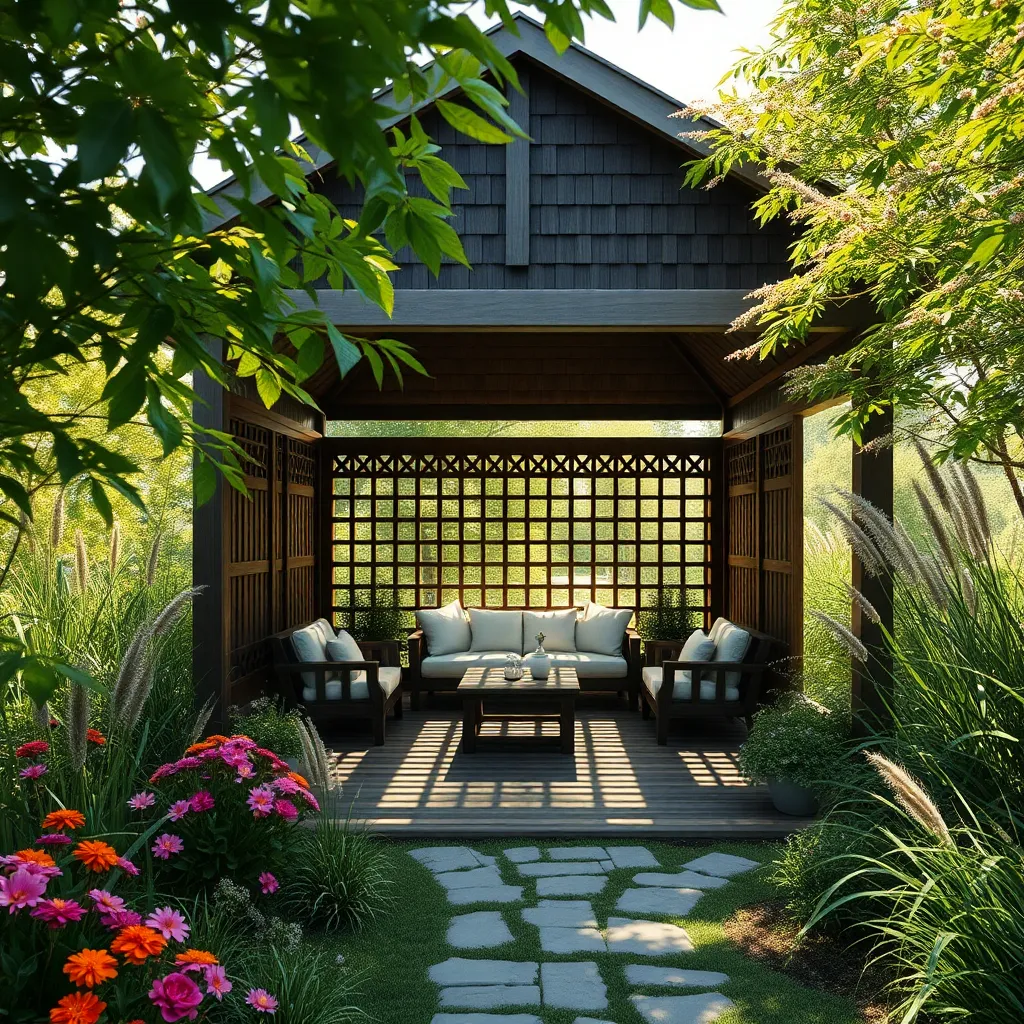
When choosing a secluded garden gazebo, consider the location and privacy it offers. Opt for a spot that is naturally sheltered by trees or hedges to enhance solitude. For construction, using weather-resistant materials like cedar or treated pine ensures longevity. Design elements such as lattice panels or climbing vines can further enhance the secluded feel while also adding aesthetic appeal. Beginners might start with a simple open-frame design, while advanced gardeners could explore octagonal or Victorian styles for added elegance.
To create the ultimate private retreat, incorporate features that cater to comfort and usability. Include seating arrangements like built-in benches or outdoor sofas to make the space inviting. Consider adding a retractable canopy or curtains for additional privacy and shade. When planning dimensions, ensure the gazebo is at least 10×10 feet to comfortably accommodate furniture and guests. Advanced gardeners might enhance the atmosphere with solar-powered lighting or a small fountain for a soothing ambiance.
Designing Hidden Backyard Pergolas
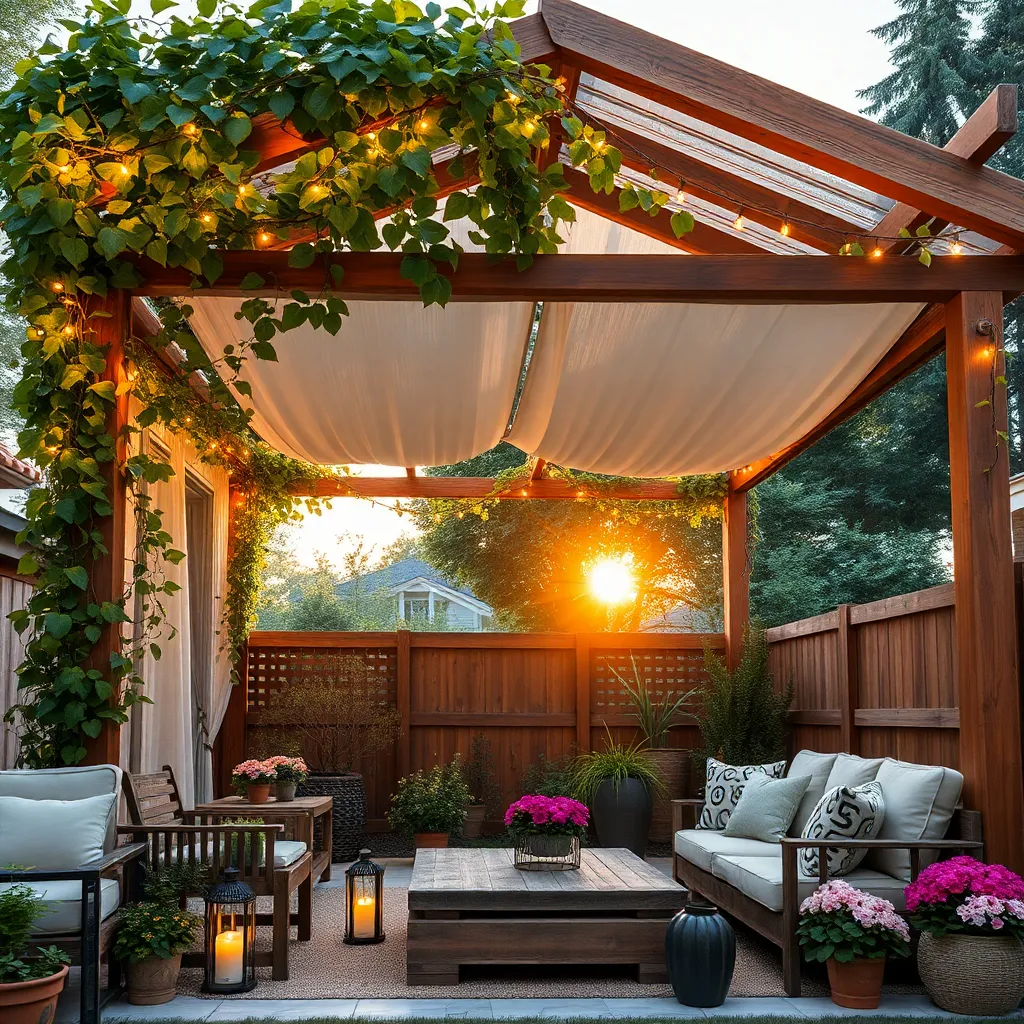
Creating a hidden backyard pergola can transform your outdoor space into a serene retreat. Begin by selecting materials that blend with your existing landscape, such as wood or metal. For a natural look, consider using cedar or redwood, which are durable and weather-resistant. Position your pergola strategically near trees or tall shrubs to enhance privacy and create a seamless integration with nature. For added seclusion, incorporate climbing plants like wisteria or jasmine, which will drape elegantly over the structure and provide both shade and a natural screen.
When designing your pergola, focus on key dimensions that suit your space—typically, a height of 8-10 feet and a width of at least 10 feet allows for comfortable movement and furniture placement. Consider advanced features like retractable canopies or adjustable louvers that offer protection from the elements while maintaining a sense of openness. For a touch of sophistication, integrate lighting elements such as string lights or lanterns, which can create a cozy atmosphere for evening gatherings. Whether you are a beginner or an experienced gardener, these elements will ensure your pergola is both functional and inviting.
Incorporating Privacy Screens Effectively
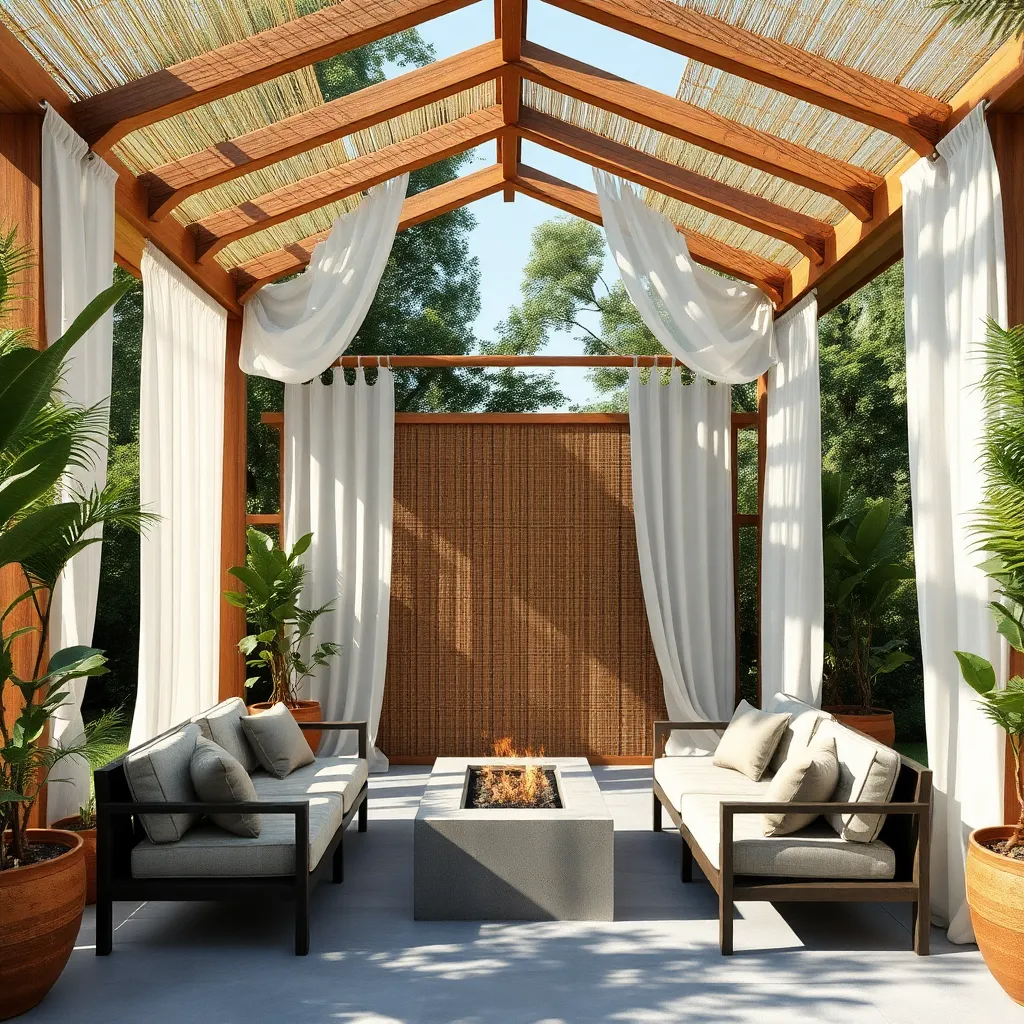
When incorporating privacy screens into your outdoor shelter, start by selecting the right materials that blend with your existing landscape. Wooden lattice panels are a popular choice for their natural aesthetic and ease of installation, while bamboo screens offer a tropical vibe and are highly durable in various climates. For a more modern look, consider metal or composite materials which provide a sleek appearance and require minimal maintenance. Choose screens that are at least 6 feet tall to ensure maximum privacy without overwhelming the space.
For a truly personalized design, explore different configurations and styles to match your specific needs. Beginners might start with simple freestanding panels that can be rearranged as needed, offering flexibility. Meanwhile, seasoned DIY enthusiasts can experiment with built-in planter boxes at the base of screens to integrate greenery and add a lush feel to their outdoor area. Consider using climbing plants like clematis or ivy, which will naturally weave through the screens, enhancing privacy while adding a touch of nature. Always ensure your screens are securely anchored to withstand wind and other elements.
Crafting Cozy Corner Cabanas
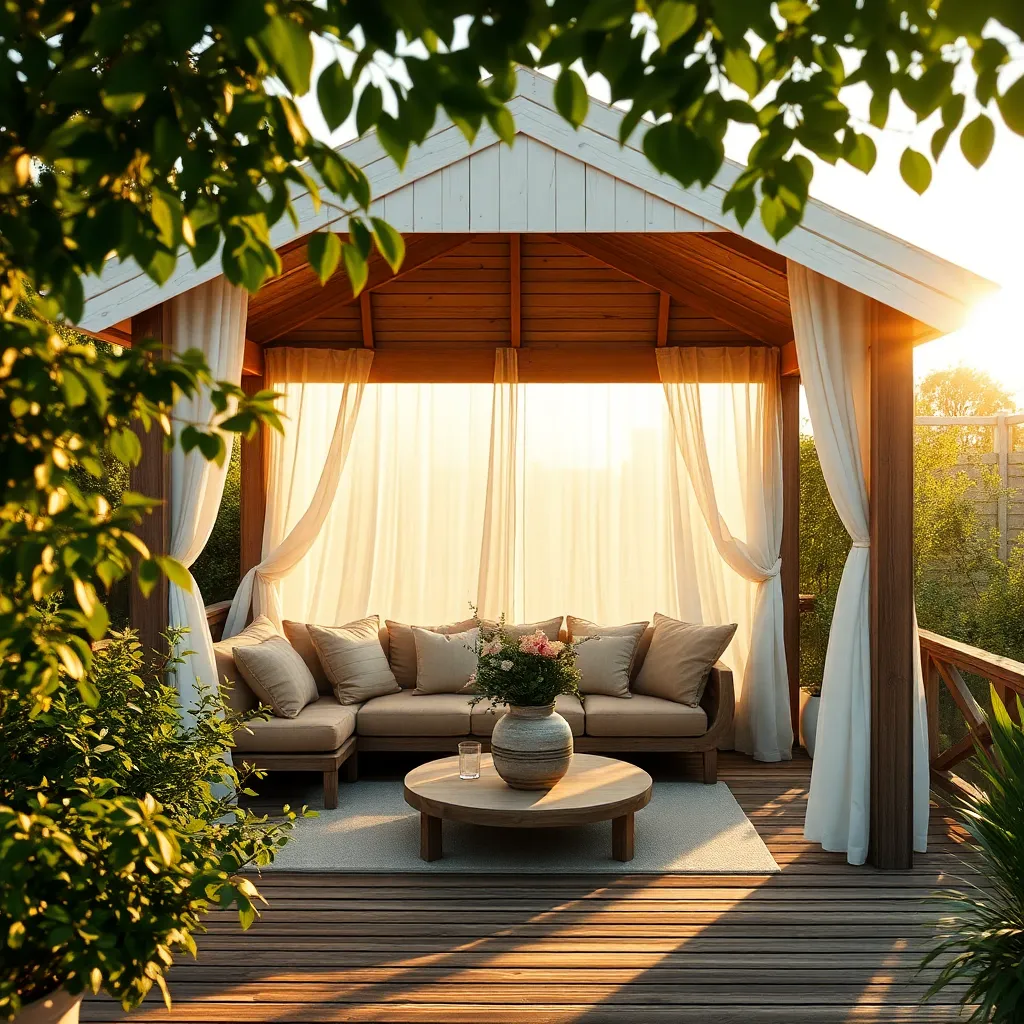
Creating a cozy corner cabana offers a perfect retreat for relaxation and privacy in your backyard. Start by selecting a sturdy frame material such as treated wood or metal, ensuring longevity against the elements. Cover the top with weather-resistant fabric, like outdoor canvas or Sunbrella, for a stylish look that also provides protection from the sun and rain. Consider adding adjustable curtains or roll-up blinds for added privacy and shade control, allowing you to enjoy your cabana in all weather conditions.
For a more polished finish, incorporate additional elements like a wooden deck base to elevate the structure, which can also help with drainage and prolong the life of the cabana. Add comfortable seating like cushioned loungers or a hammock to enhance relaxation, and consider stringing LED lights across the top for a warm ambiance during evening hours. Beginners can start with a simple structure and gradually add details, while more experienced DIYers might explore installing built-in benches or decorative stone pathways leading to the cabana. By tailoring the design to your space and needs, your corner cabana becomes a personalized oasis of tranquility.
Utilizing Natural Vegetation Barriers
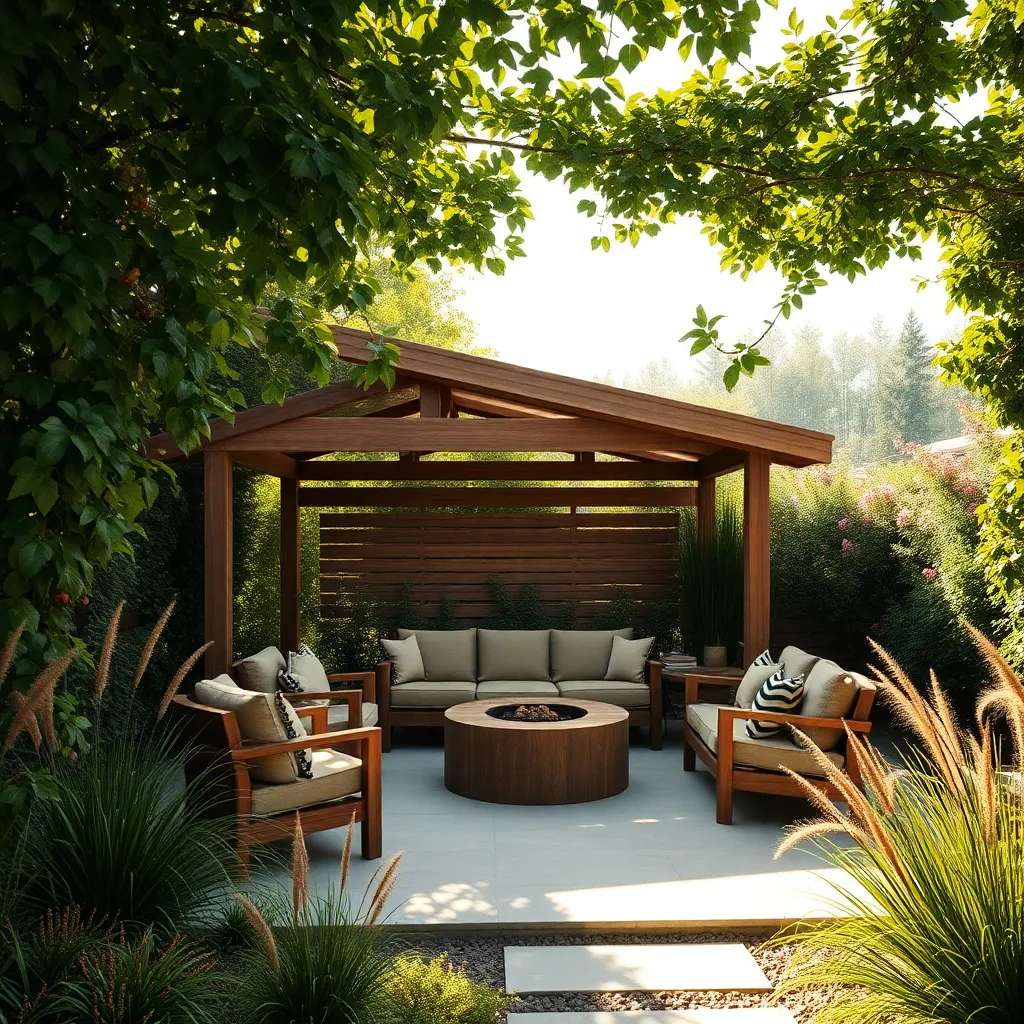
Creating a natural vegetation barrier is a practical way to achieve privacy while enhancing your outdoor space with lush greenery. Start by selecting fast-growing plants like bamboo, leylandii, or privet, which are excellent for forming dense screens. Space them evenly, about 3-4 feet apart, to allow for optimal growth and coverage. For a more diverse look, consider mixing in flowering shrubs such as lilac or forsythia. Regular pruning will help maintain the desired height and thickness, ensuring your green barrier remains effective and visually appealing.
Incorporating natural elements into your privacy design not only adds aesthetic appeal but also promotes a sustainable environment. For those with more gardening experience, layering different plant heights can create a tiered effect, enhancing privacy while adding depth. Use mulch around the base of your plants to retain moisture and suppress weeds, promoting healthier growth. To maximize privacy, consider adding a trellis with climbing plants like ivy or clematis, which can fill gaps and add vertical interest. With thoughtful planning and regular maintenance, your natural vegetation barrier will serve as a serene and private retreat in your outdoor area.
Constructing Enclosed Patio Retreats
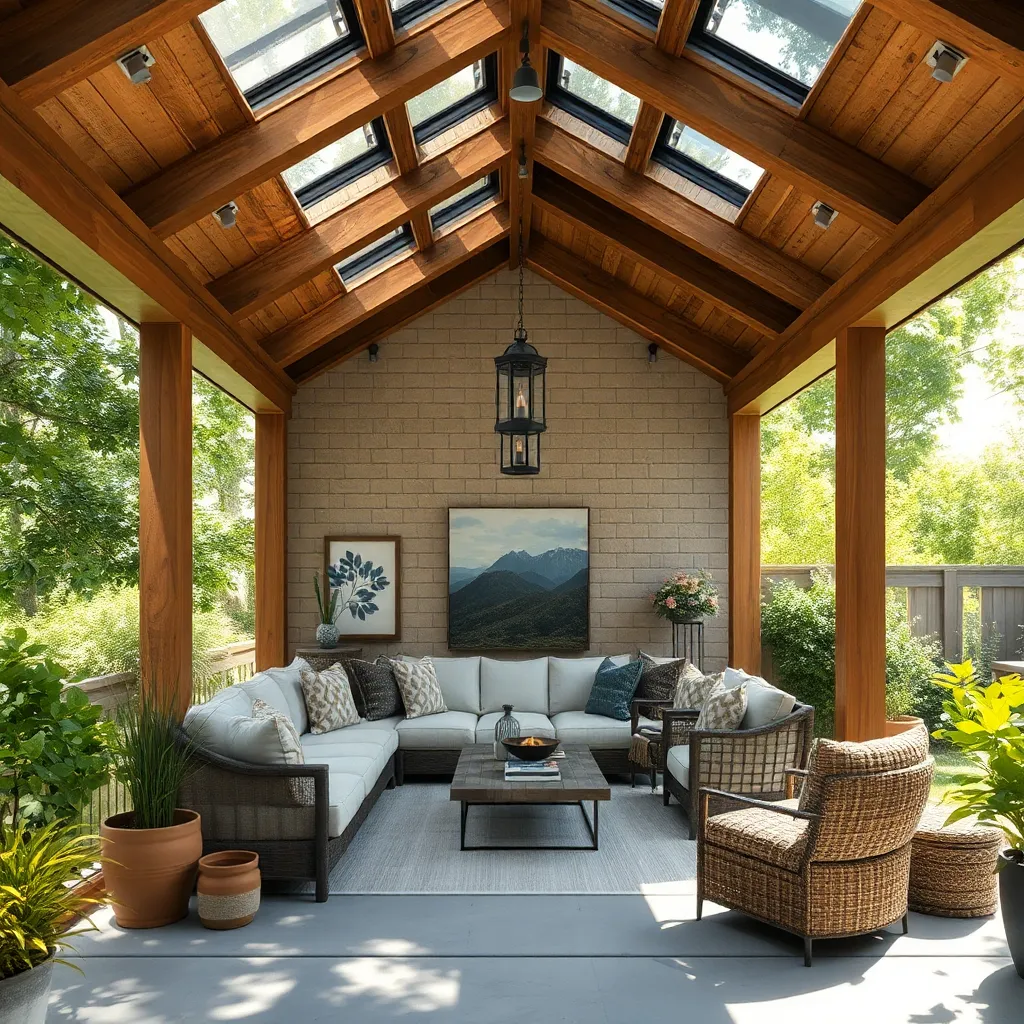
Creating an enclosed patio retreat offers a perfect blend of privacy and comfort for your outdoor space. Start by selecting sturdy materials like treated timber or composite wood for the frame, ensuring durability against weather elements. For beginners, using prefabricated wall panels can simplify construction and save time. Consider enclosing your patio with transparent polycarbonate sheets or glass panels to maintain natural light while adding a layer of protection against wind and rain.
Advanced builders might explore adding sliding doors or foldable walls to enhance versatility and access. Incorporate elements like built-in seating or planters to make your retreat both functional and inviting. To personalize your space, consider using weather-resistant fabrics for cushions and install ambient lighting to create a cozy evening atmosphere.
- Ensure the foundation is stable, using concrete pavers or a wooden deck.
- Measure your space carefully, aiming for a minimum of 10×10 feet to comfortably accommodate furniture.
With these steps, your enclosed patio can become a year-round haven for relaxation and entertainment.
Building Secluded Treehouse Sanctuaries
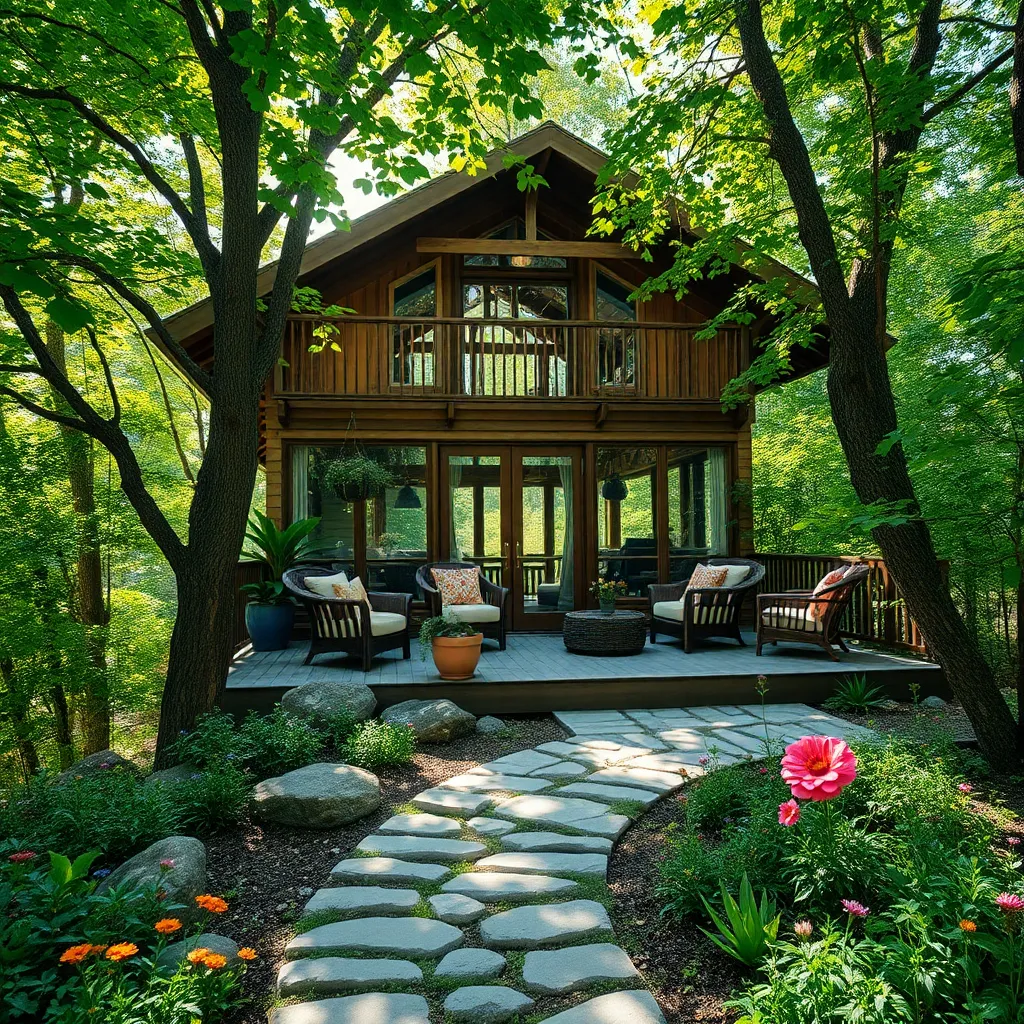
Building a secluded treehouse sanctuary can transform your backyard into a private retreat, offering a unique blend of adventure and tranquility. Start with choosing a sturdy tree, like an oak or maple, which provides stability and longevity. Opt for pressure-treated lumber or cedar for the structure as these materials resist rot and weather well. To ensure safety, install robust support beams and use galvanized bolts and brackets to anchor the treehouse securely. Don’t forget to add a railing around the deck for added safety, especially if children will be using the space.
Enhance your treehouse sanctuary by incorporating thoughtful design elements that cater to your personal style and comfort. Consider adding a waterproof roof to shield against the elements, and use insulated windows to maintain a comfortable temperature inside. For a cozy interior, lay down weather-resistant flooring and include built-in seating or hammocks for relaxation. Beginners might start with a simple design, while more advanced builders could incorporate features like solar-powered lighting or a pulley system for transporting items. This blend of functionality and creativity makes your treehouse a perfect hideaway.
Integrating Privacy-Focused Canopy Tents
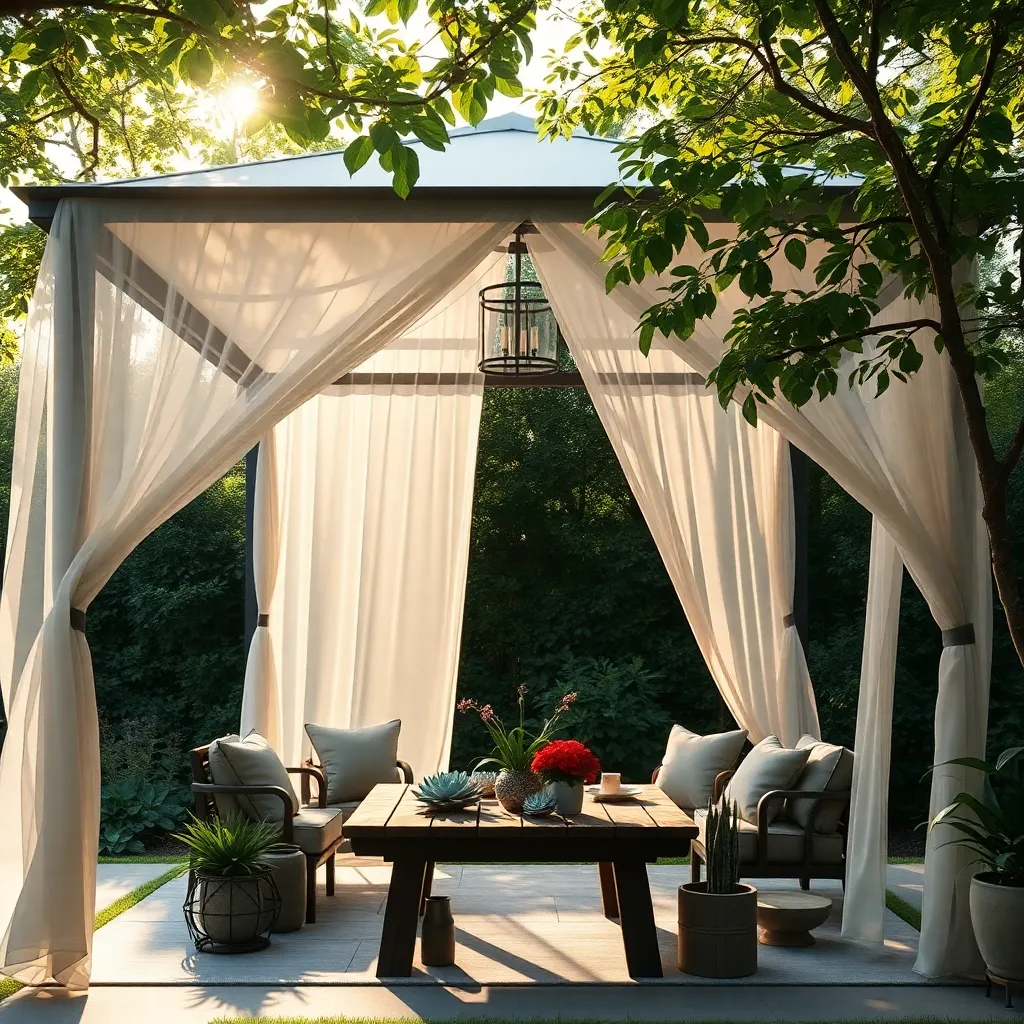
Integrating a canopy tent into your garden can offer a stylish and practical solution for added privacy. When selecting a canopy tent, opt for materials like durable polyester or canvas that can withstand various weather conditions. Look for designs with sidewalls or curtains that can be easily drawn to ensure maximum seclusion. For extra privacy, consider positioning the tent near a natural barrier, like a row of shrubs or a fence, to enhance the sense of enclosure.
For those looking to elevate their outdoor privacy setup, consider customizing your canopy tent with additional features. Incorporate adjustable screens or lattice panels to add an extra layer of seclusion while allowing for airflow. If you’re handy, you might even construct a wooden deck beneath the tent for a more permanent feel, keeping dimensions around 10×10 feet for ample space. These thoughtful enhancements can transform a simple canopy into a private retreat in your own backyard, inviting you to spend more time outdoors.
Designing Intimate Courtyard Structures
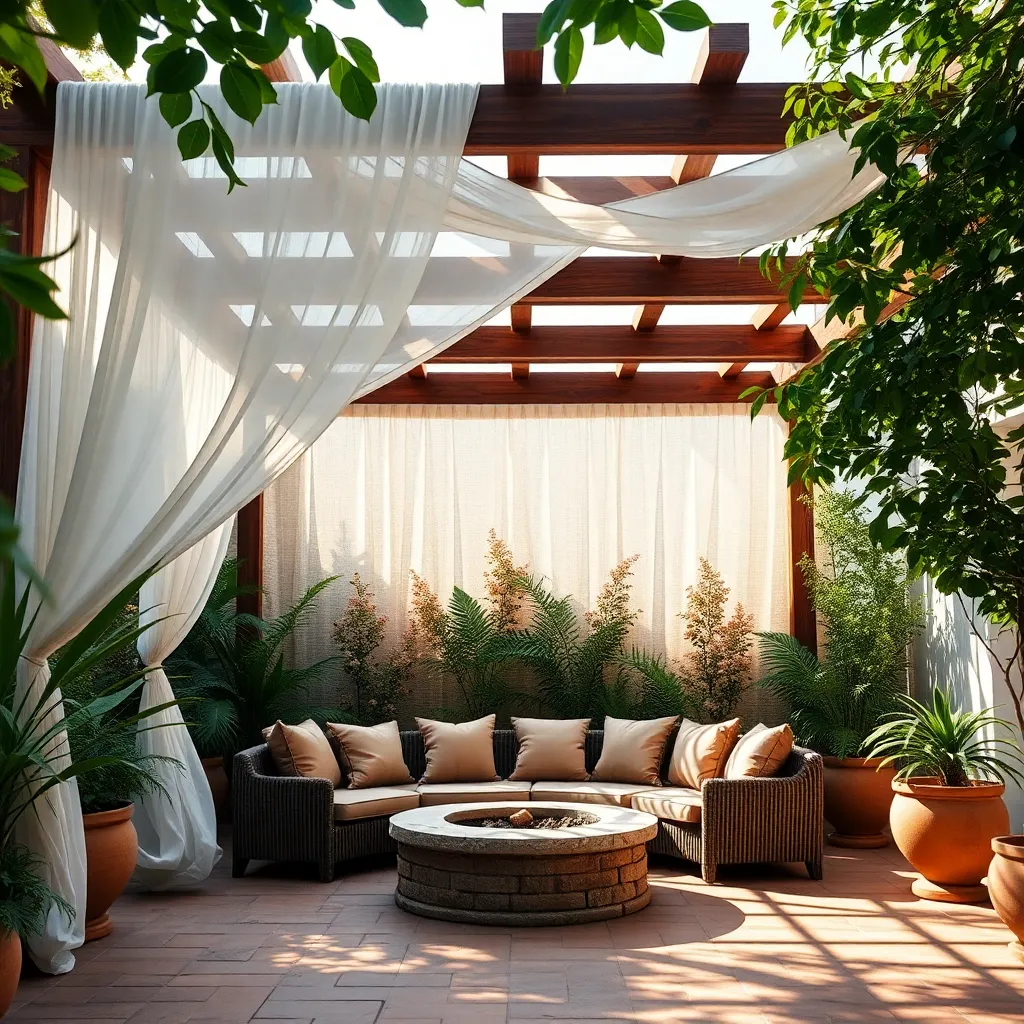
Transforming a courtyard into an intimate outdoor retreat begins with choosing the right structure. Consider building a pergola with adjustable louvers or climbing plants for a customizable blend of sunlight and shade. For materials, opt for durable options like cedar or pressure-treated wood, which are both weather-resistant and aesthetically pleasing. Beginners can start with a simple pergola kit, while those with more experience might enjoy customizing their design with built-in seating or planters for added functionality.
Incorporating walls or panels is crucial for enhancing privacy within your courtyard structure. Use materials like bamboo screens or frosted glass panels to create a secluded atmosphere without sacrificing style. Advanced DIYers might explore adding retractable walls for flexibility in use. Ensure the structure is proportionate to your space—aim for dimensions that allow easy movement while maintaining a cozy feel. By focusing on both form and function, your courtyard can become a serene escape for relaxation and social gatherings.
Creating Secluded Hammock Nooks
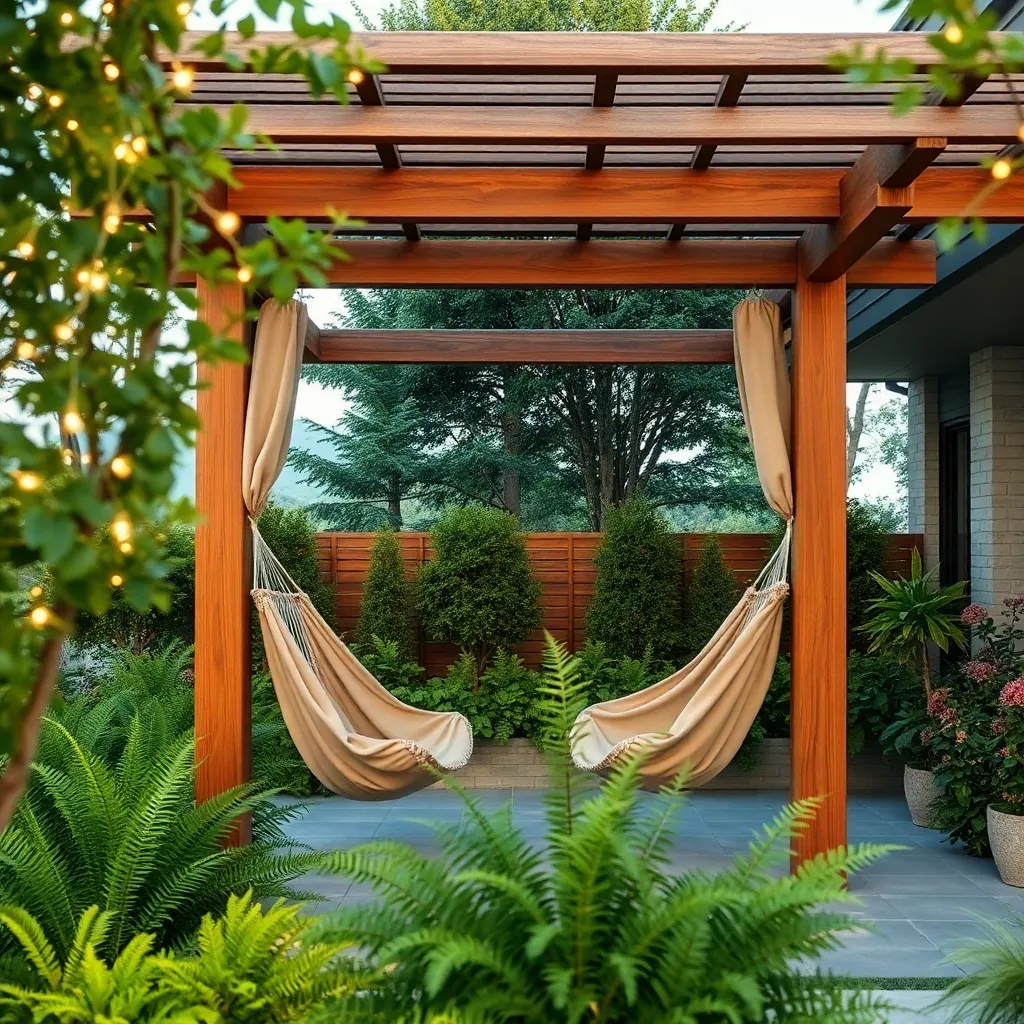
Transforming a corner of your garden into a cozy hammock nook can create a perfect escape within your outdoor space. Start by selecting a quiet, shaded area that offers some natural privacy, perhaps under a large tree or alongside a tall hedge. For a basic setup, choose a durable, weather-resistant hammock made from materials like polyester or acrylic, which can withstand the elements. Ensure the hammock is properly installed using heavy-duty hooks or a sturdy stand that can support the weight safely.
Enhance privacy with creative additions like a bamboo screen or a trellis adorned with climbing plants such as clematis or jasmine. These not only add seclusion but also bring a touch of nature’s beauty into the space. For a more advanced touch, consider constructing a pergola over the hammock area, providing additional shade and an opportunity for hanging plants or fairy lights. Measuring the space and planning the dimensions accurately will ensure a comfortable fit and a harmonious integration with the rest of your garden design.
Exploring Portable Shelter Solutions
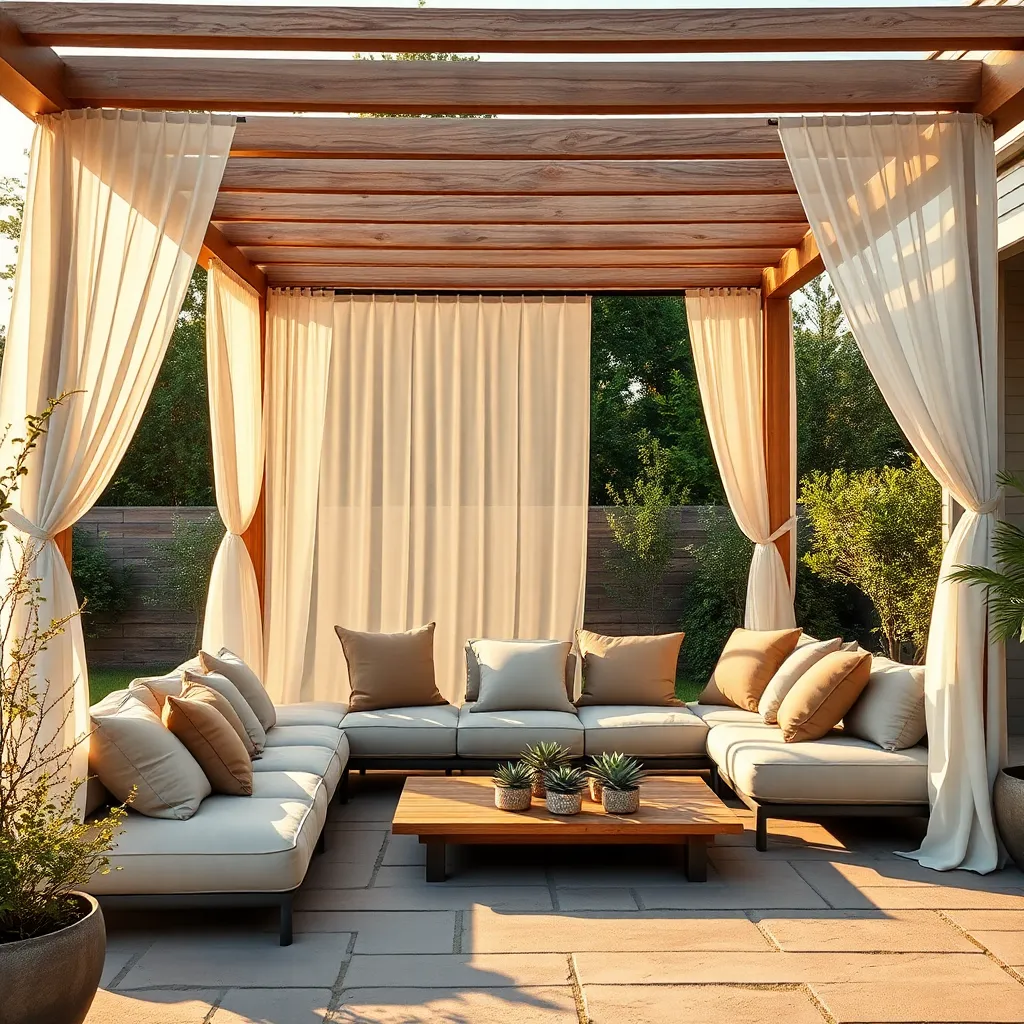
Exploring portable shelter solutions can add both versatility and privacy to your outdoor space. Consider options like pop-up gazebos or canvas bell tents, which are easy to set up and dismantle. These shelters typically feature **sturdy, weather-resistant materials** such as polyester or canvas, ensuring they withstand various weather conditions. For a beginner-friendly setup, look for shelters with straightforward assembly instructions and minimal tools required. More advanced users might opt for models with additional features like built-in ventilation or modular walls for increased customization.
When selecting a portable shelter, pay attention to **size and weight** to ensure it fits your outdoor area while remaining easy to transport. A good starting point is a shelter measuring around **10×10 feet**, which offers ample space for seating and activities. For added privacy, choose designs that include sidewalls or zippered entries. Advanced users can enhance their setup by incorporating **additional accessories** like anchor kits for stability or interior lighting for evening use. By choosing the right portable shelter, you’ll create a flexible, private retreat that can adapt to any outdoor setting.
Enhancing Privacy with Sound Barriers
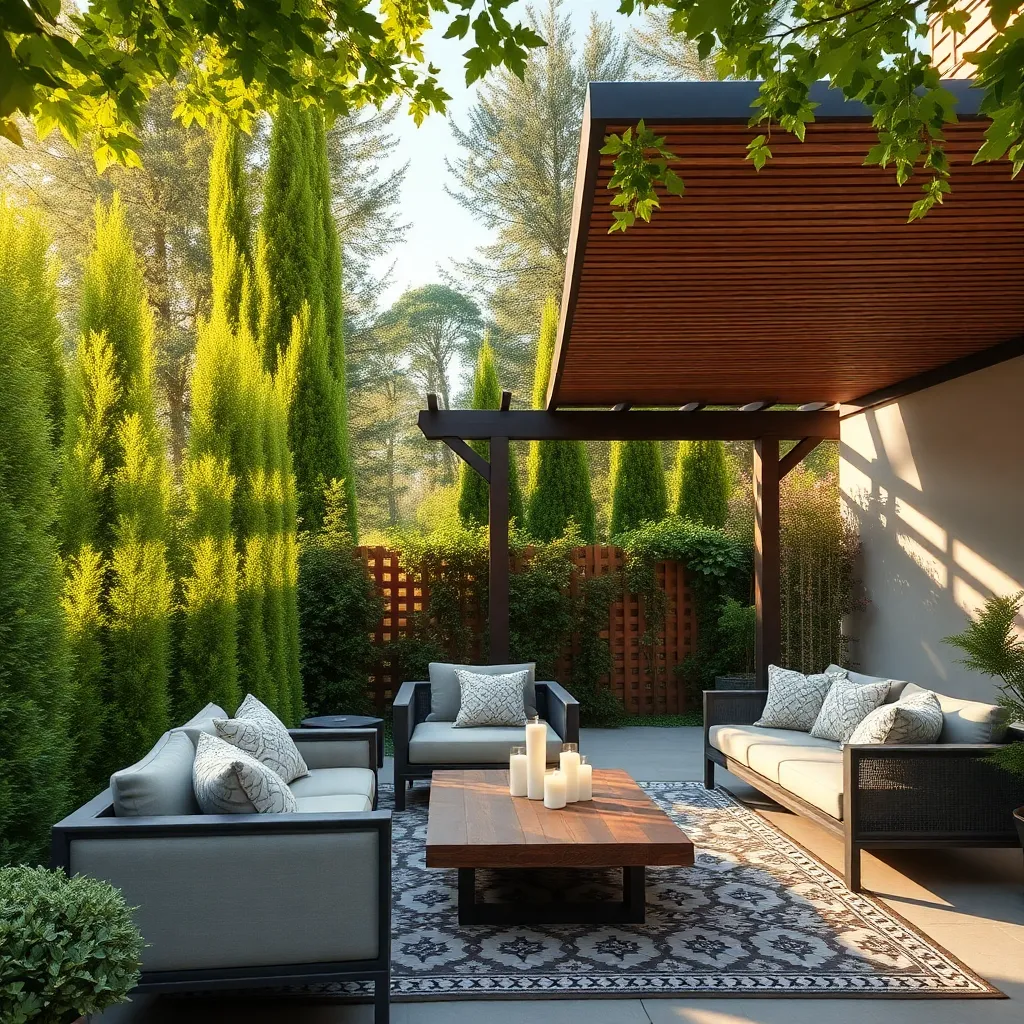
Creating sound barriers is an excellent way to enhance privacy in your outdoor shelter and enjoy a peaceful retreat. Dense hedges or bamboo screens can effectively block unwanted noise from neighbors or traffic. For a more permanent solution, consider installing a fence made from materials like wood or composite, which can deflect sound waves. Ensure the fence is at least six feet tall for optimal noise reduction; adding a layer of mass-loaded vinyl can further improve its soundproofing capabilities.
For those seeking a more natural approach, strategically planting tall, dense shrubs or trees can serve as both sound and visual barriers. Species like Leyland cypress or arborvitae are excellent choices due to their year-round foliage. Advanced gardeners might experiment with creating a layered landscape, combining trees, shrubs, and groundcover plants to maximize sound absorption. For best results, position plants close to the noise source and maintain them regularly to ensure they remain effective.
Maximizing Seclusion with Smart Layouts
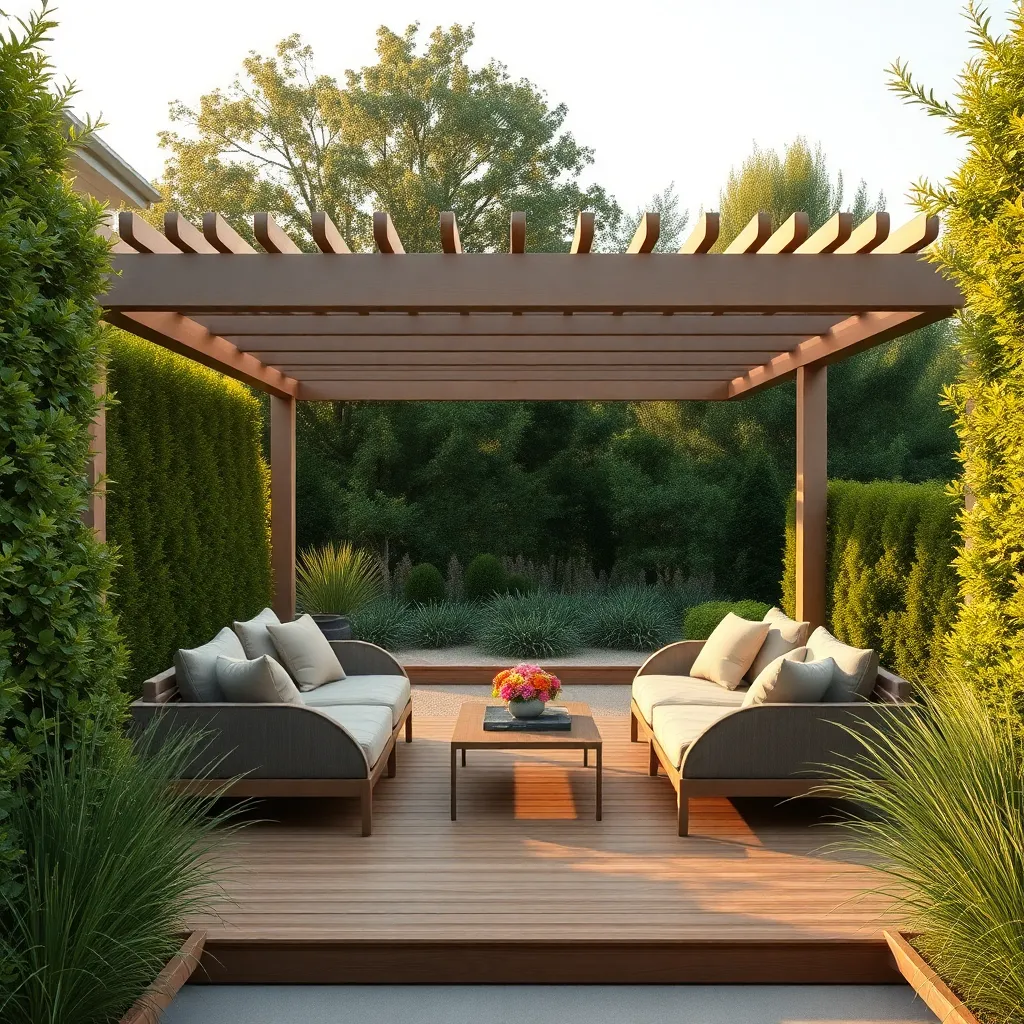
To create a secluded outdoor retreat, start by strategically placing your shelter within the landscape. Consider using existing structures like fences or walls as part of the design to naturally enclose the space. For optimal privacy, position your shelter away from direct sightlines of neighboring properties. Incorporate natural elements such as hedges or tall ornamental grasses around the perimeter to enhance the feeling of seclusion.
Choosing the right materials can significantly impact the level of privacy and aesthetics. Opt for dense, weather-resistant materials like bamboo or reclaimed wood panels to construct walls or screens. For a more advanced approach, consider incorporating a living roof or vertical garden on one side of the shelter, which not only boosts privacy but also adds a lush, green element to your design. Use flexible layouts that allow for easy reconfiguration, ensuring your space remains adaptable to different needs and seasons.
Conclusion: Creating Beautiful Outdoor Spaces
In exploring ’13 Outdoor Shelter Designs for Ultimate Privacy,’ we’ve journeyed through the transformative power of creating personal havens, your very own sanctuaries for nurturing relationships. From cozy pergolas and secluded garden pods to intimate gazebos and innovative green walls, each design underscores the importance of carving out private spaces where connections can flourish undisturbed. These concepts remind us that just as plants need the right conditions to thrive, so too do relationships benefit from thoughtful environments that encourage growth and intimacy.
As your immediate next step, consider assessing your current outdoor space and envision how one of these designs could enhance your relationship dynamics. Whether it’s a simple bench under a tree or a more elaborate retreat, take a moment today to plan your ideal space.
Remember, a successful relationship often begins with intentional actions. Bookmark this article now to easily revisit these inspiring ideas whenever you’re ready to transform your space—and your connection. By prioritizing privacy and intimacy, you’re setting the stage for deeper, more meaningful relationships. Here’s to creating spaces that empower you to build a future filled with loving, lasting connections.

